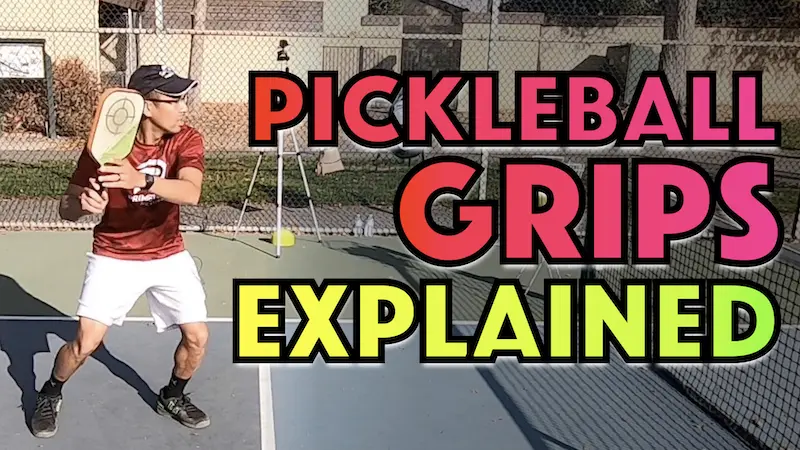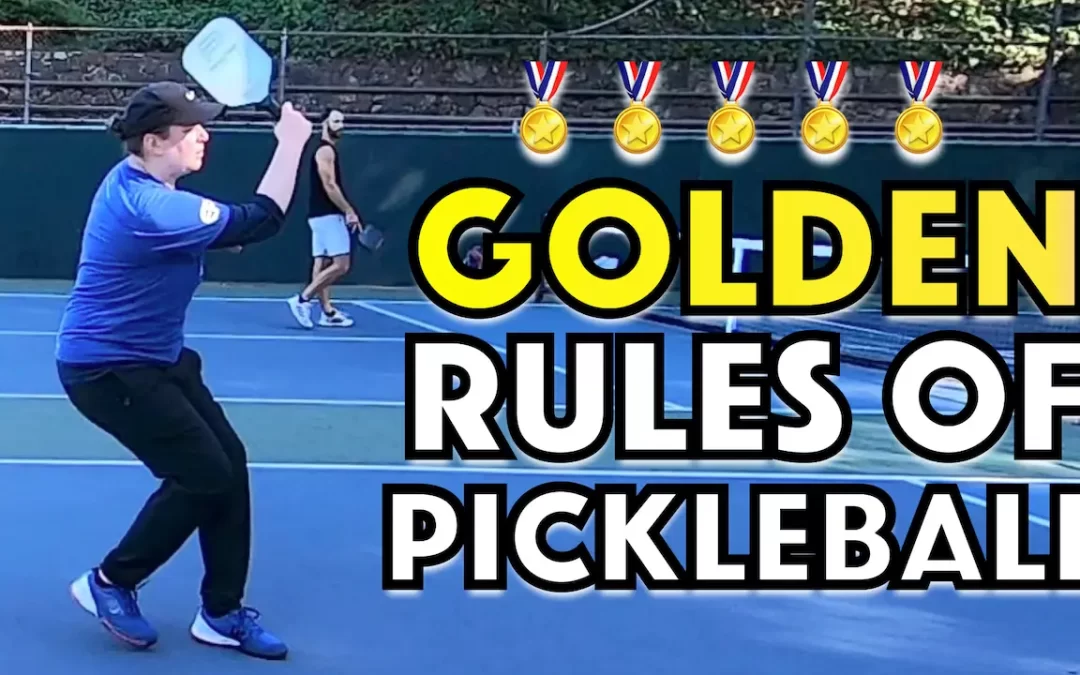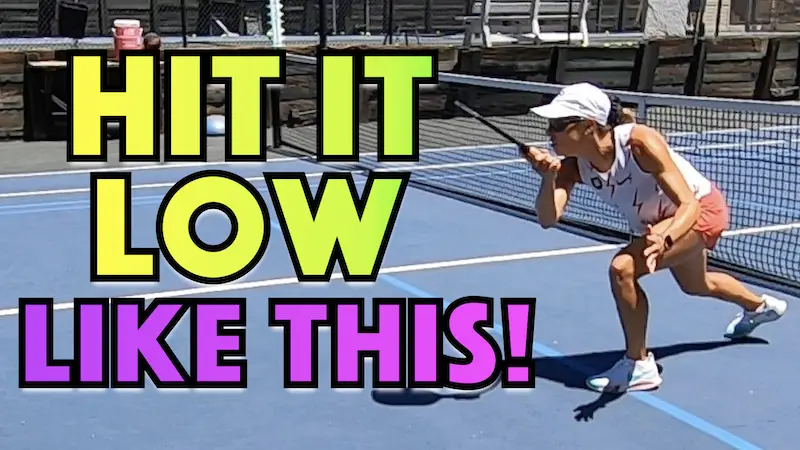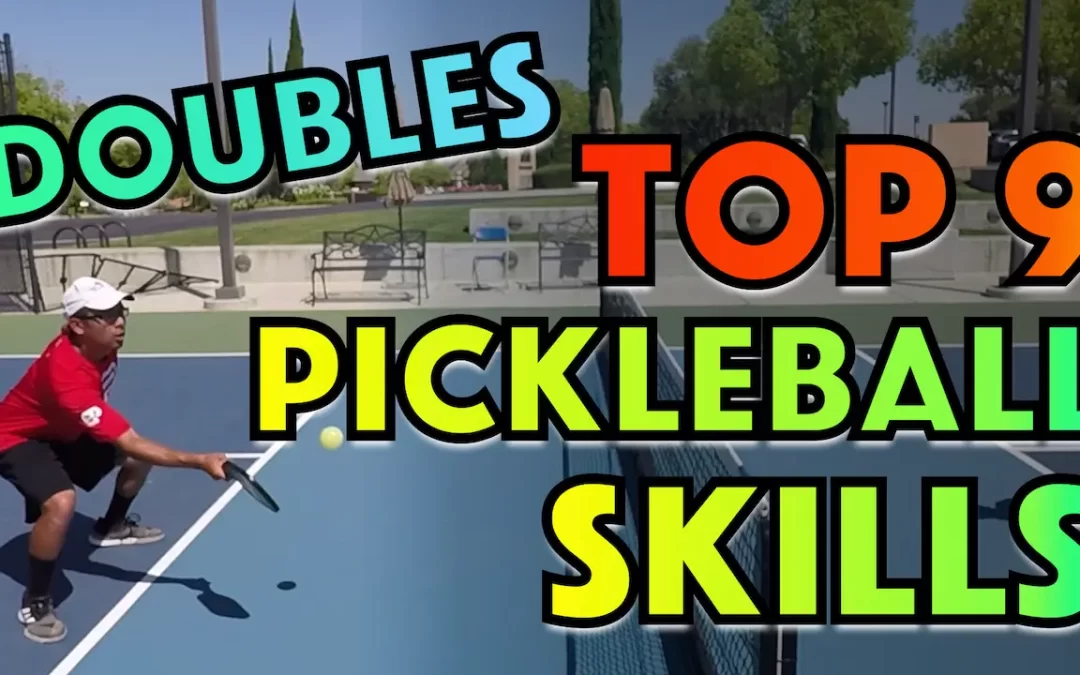The game of pickleball can be exciting. One of the most exciting aspects is coming out on the winning end of a volley “shoot out” with all four players up at the non-volley zone line.
The term “shoot out” here simply refers to a fast exchange back and forth with only volleys and trying to beat each other with fast and hard volleys. He or she with the fastest reactions wins.
If you are new to pickleball, you may wonder what a volley is, what makes it so important and how to hit it well.
A volley simply refers to anytime a player hits the ball on the fly. Essentially, you do not let bounce once on your side even though that is allowed. Every pickleball player needs to learn how to volley because it is a highly effective tactic when used at the right time and we’ll get into all the benefits and execution as we go.
What Is the Importance of a Volley in Pickleball?
Volleying is important whether you’re playing a singles game or doubles game. Because you are taking the ball on the fly you are taking valuable time away from your opponent to get ready to receive your shot and often you can get higher contact points with a volley which allows you to hit down into your opponents court.
Learning how to volley effectively will help you improve and should help you win more pickleball games because of these benefits.
The basic volley is hit with a backhand or a forehand depending to what side of you the ball is headed towards. The backhand stroke tends to be more common since a ball coming at some part of your body is most easily hit with a backhand. Due to biomechanics, hitting that shot with a forehand is very difficult.
The volley is typically executed when a player is playing from up near the non-volley zone line though it certainly can be executed from further back in the court if the incoming ball is high enough.
The goal of the volley is to hit it either down at your opponents feet to force them into very low and difficult contact or away from your opponent if you see a sizable gap somewhere on the court. The idea is that they will miss the ball, and it will end the rally. This gives your team the point if you are the serving team. If you are the receiving team, it ends the rally.
There are a variety of different types of volleys you can use to dominate the game, and we will discuss them in this article.
Five Parts Of the Pickleball Court You Must Know
As a new player, you must know the basic boundaries or zones on the court. You can strategically plan a volley and cause your opponent to miss by knowing these areas.
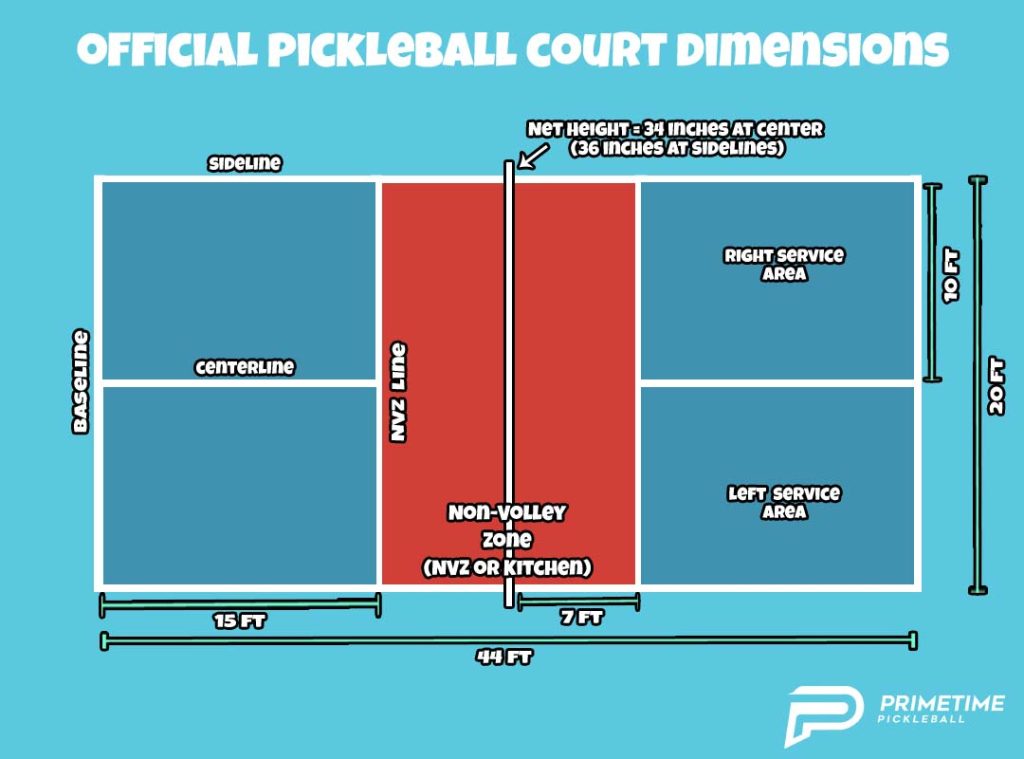
The five main parts or lines of the court are:
1. Baseline
This is the line that forms the back of the court. It is twenty-two feet from the net, and if you shoot the ball past the baseline, the ball is out of bounds, and the rally ends.
2. Centerline
This line divides the service boxes into two and extends from the no-volley zone (Kitchen line) to the baseline.
3. Kitchen
The non-volley zone (we will discuss more later).
4. Sidelines
The lines are perpendicular to the net on each side of the net and run from the baseline on one side of the court to the baseline on the other side of the court. Like the baseline, if you go out of these lines, you are out of bounds, and the rally ends.
5. Backcourt
The back of the court is near the baseline but still inside. This is an effective place to land the ball in your opponent court because they can do the least amount of damage on the next shot when they are hitting hit from near the baseline.
Avoid The Non-Volley Zone (NVZ) | Stay Out Of the Kitchen
The non-volley zone is the official name, but you will more than likely hear it called the kitchen, and it can get pretty funny when you accidentally hit a volley while standing in the kitchen.
Everyone will shout “Kitchen,” and you will be shaking your head at your silly mistake. This is the easiest rule for beginners to mess up on by accident and even experienced players find themselves stumbling into this zone from time to time.
Well, what is the kitchen? The kitchen is the area that extends seven feet from each side of the net. At that distance, on each side of the court there is a line that extends from sideline to sideline called the non-volley zone line. The rectangular area that is created by this line and the sidelines is called the non-volley zone.
The kitchen rule was created to prevent players from standing right up against the net and hitting volleys and smashes as this would very quickly end the rally on each point and not be much fun.
Non-Volley Zone Rules
To understand this rule is to know that you cannot step into the non-volley zone or on the non-volley zone line with your foot if you make contact with the ball out of the air (as a volley).
You may extend your arm forward in the air and contact the ball in the kitchen, just as long as your feet are not physically touching any part of the kitchen. If you do this, you have caused a fault.
It can get just a bit more complicated though so pay attention. You cannot step in the non-volley zone and hit a volley; that is easy enough to understand.
However, a non-volley zone violation also occurs if you swing the paddle to contact the ball out of the air and the volley motion causes you to step into the kitchen after the ball was hit.
Said another way, even if you hit the ball with both feet outside the kitchen, your momentum from hitting the volley cannot carry you into the kitchen even after you have made contact and regardless how many times the ball has bounced on the other side.
The official pickleball rules from the International Federation of Pickleball volley rule state:
9. B. “It is a fault if the volleying player or anything that has contact with the volleying player while in the act of volleying touches the non-volley zone.”
9. C. “During the act of volleying, it is a fault if the volleying player’s momentum causes the player to contact anything touching the non-volley zone, including the player’s partner.”
Volleys are allowed anywhere on the pickleball court other than the non-volley zone or the kitchen. So, the rule to remember when having an intense volley moment in pickleball is to stay out of the kitchen.
Pickleball Volley Shots & Hitting Tips
To master the game and have fun at pickleball, you have to start with the basics & fundamentals. Learning the basics of volleying in the context of the basics of the game will help you get started.
Forehand Volley
The paddle stroke is on the same side as your dominant hand. For example, a right-handed player will present their paddle face to the ball by laying their wrist back on the right with their palm facing forward and meet the ball in front of their body with as little backswing as possible and only as much follow through as is needed. The traditional volley is a compact stroke so be careful not to overdo it by swinging too much. It’s a common trap.
Backhand Volley
A shot where you hit the ball on the opposite side of your dominant forehand and any shot that is coming towards your body that you will need to hit as a volley. On the backhand, you lead with the knuckles rather than the palm of your hand. Check out an excellent breakdown of backhand volley technique in this video:
Hitting Basics To Master
You should just about always hit a volley if you have the opportunity to do so. This gives your opponent less time to react for their next shot.
Here are several hitting tips to use so you can return with a quick shot:
- Always make sure you are in a ready position as your opponent is contacting their shot.
- In the ready position you should be holding your paddle with a continental grip, which is the best paddle grip for volleys because you can hit a forehand volley or backhand volley out of that grip.
- The ready stance for pickleball volleys will be standing with your feet slightly wider than shoulder width apart or and be squared up (facing) the net, near the non-volley zone line.
- An important volley technique is to hold your paddle in front of you approximately waist high. Most contact at the net will be waist high or lower so it’s best not to hold it too high up. Anything shoulder height and hit hard is likely going out of bounds past the baseline. A common mistake is to hold the paddle too high.
5 Volley Shots To Help Master Your Pickleball Game
In addition to the traditional volley, there are other types of intermediate and advanced volleys. When you add these types of volleys to your game it can really help you at the right times during a point and as a result you will win more points:
1. Dink Volley
This soft volley is typically hit while all four players are up at the non-volley zone line in a dink exchange. It’s similar to a regular dink in that the purpose, shape and target of the shot are the same. The target is in or near the kitchen and the purpose is to prevent and attack as well as maneuver for your own attack. You will use the dink volley if you can reach your opponent’s incoming dink out of the air or to prevent your opponents dink from landing behind you so that you don’t have to back up and hit it ackwardly.
2. Roll Volley
This type of volley is also often referred to as a topspin volley. This half-swing firm volley causes the ball to bend down towards and then propel forward after the ball bounce due to spin.
3. Punch Volley
The paddle face is roughly parallel to the net with a punch shot and slightly open. You accomplish this shot using a forward punching movement and the elbow as a hinge. This is a great shot when you are going toward your opponent’s feet or aiming toward a medium-height opening. This is a very common type of volley used in a quick exchange at the net.
4. Underspin (Slice/Backspin) Volley
This volley is hit with a slight low to high motion so that you can impart some underspin on the ball. Backspin on the ball helps keep the ball low after the bounce which is always very useful to force your opponents to hit up.
5. Drop Volley
This shot is also called a catch volley. It is a great change up pickleball volley strategy when your opponent is back in the court and seems to be firing the ball back at you and is expecting you to keep firing it back deep.
It is accomplished by using a soft grip and absorbing the incoming pace of the ball, causing the ball to land softly over the net.
Pickleball Volley Strategy & Drills to Practice
There are a lot of volley strategies to keep in mind as you play an intense game of pickleball. There are also ways that smart pickleball players practice their shots or drills.
The most important pickleball volley strategy to remebber is to volley soft when you contact low and volley hard when you contact high.
When you contact your volley low (below the heigh of the net) it makes sense to hit a soft dink volley and keep the ball bouncing low on your opponents side. If you hit high from that low contact point you must clear the net so you you have to hit up. This will give them a high contact with which to punish you with. Unless they have slow hands, then you might come out on top.
If you have a high contact point on a volley that is ideal because you can now attack down into their court which will be hard for them to defend. You are in charge of the point at that stage.
Volley Drills to Improve Your Game
You can do simple drills with a partner by just volleying back and forth with each other. Start at a speed that is comfortable for both of you so that you can keep it going. Increase the speed as you go. You will want to hit at each other to keep this drill going and not around each other. It’s not about winning the rally, it’s about control and how long you can keep the ball going.
You can use a wall to practice reactions volleys if you are alone. This is great way to get a lot of practice in and to work on your volleys and hands speed.
When doing this, it’s a good idea to be standing back seven feet – out of the pickleball non-volley zone and having a mark with tape to show you the net’s height. If you need to slow it down to maintain control it’s ok to have a target higher on the wall so that the ball gets all the way back to you. As you improve, you can hit it harder and lower the target. Don’t worry about the ideal height from a strategy perspective. That is not important and not the point of this exercise.
Final Thoughts
We have learned a lot about pickleball volleys. A couple of key takeaways are:
- Have a continental grip on your volleys so that you can hit a forehand and a backhand.
- Use the ready stance as your opponent is making contact with the ball each time so that you can effectively react to the oncoming ball that you will take as a volley.
- Plan to practice your volley skills with a partner or against the wall so that you can improve your pickleball volley techniques.
- Learn, practice and use the different volley types at the appropriate stages of a point from maximum success on the scoreboard.
Most of all, learn and have fun with the game. Get the exercise you want in this action-packed game of pickleball.
Stay tuned for more Pickleball techniques and tips from Primetime Pickleball. If you want to get 3 Keys To a Killer 3rd Shot, check it out here.


